











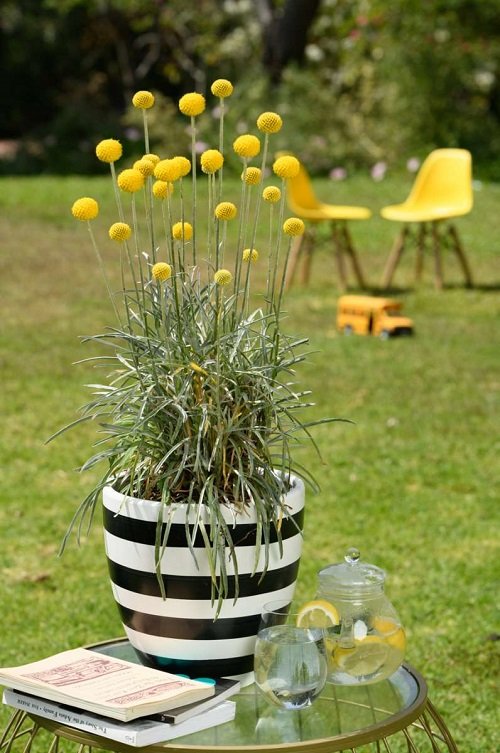
Down under in Australia, there is a stunning perennial flower that goes by the name of Craspedia globosa. It’s a sight to behold with its ping-pong ball-like appearance, making it a perfect choice for garden beds and floral decorations. If you’re interested in growing this plant, check out some additional information here. Another beautiful option is the Yellow Iris.
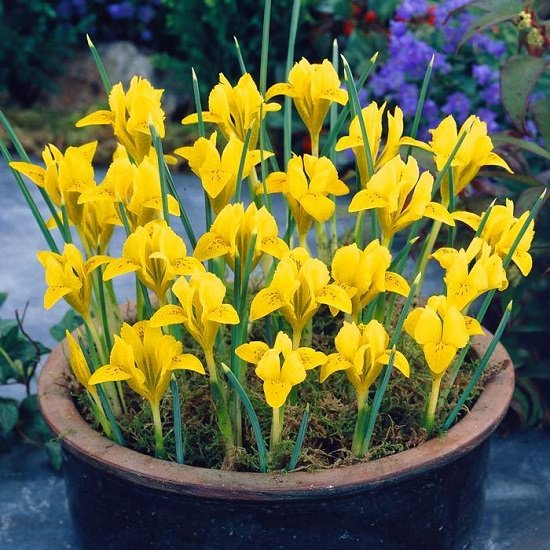
Evening primroses, scientifically known as Oenothera biennis, have taken the gardening world by storm as they offer a captivating scent and lovely blooms that emerge at night. These plants are preferred by gardeners as they don’t require much effort to maintain and bring vibrant colors to their gardens. Additionally, evening primroses have been used extensively in natural medicine for various therapeutic benefits. Therefore, if you’re in search of a yellow-flowering plant to grow in your garden, you should consider getting your hands on some evening primrose seeds.
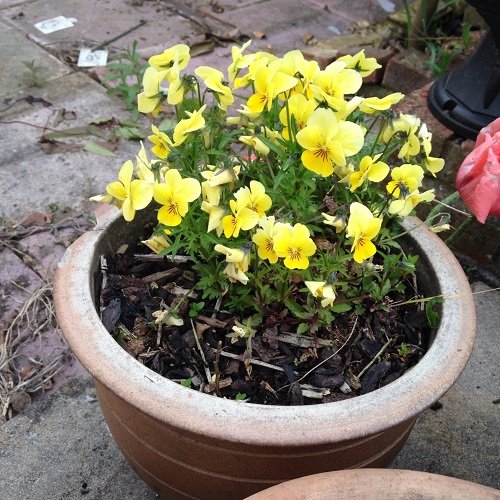
Let me introduce you to the lovely Oenothera, also known as Holly’s New Home. This vibrant yellow wildflower is a dream come true for inexperienced gardeners because it needs little care. It’s so well-liked that it’s considered one of the most prevalent yellow flowers around. If you’re on the hunt for another great option, don’t miss out on the Black-Eyed Susan.
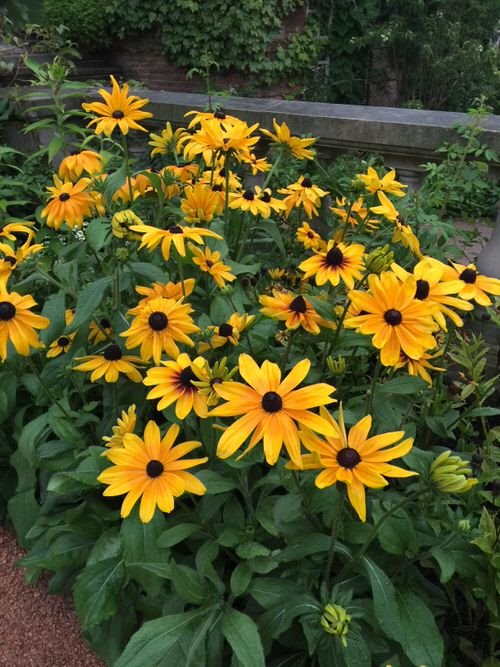
The prickly pear cactus, scientifically known as Opuntia, is a striking plant with its green stems adorned with spines and bright yellow petals. It’s no surprise that this cactus flower is a top pick for those who adore the beauty of a sunny yellow bloom.
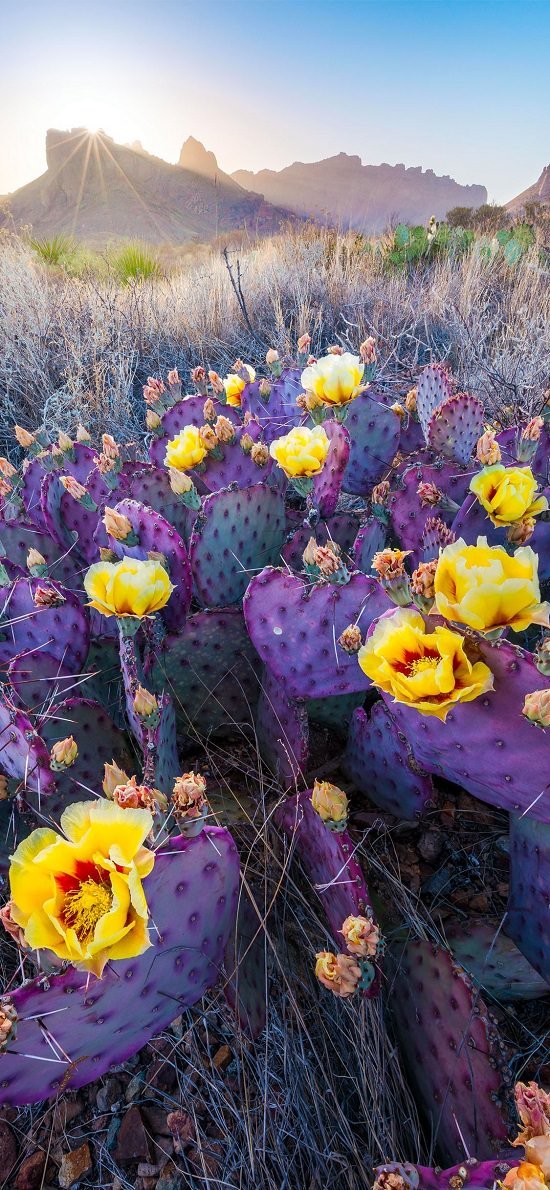
The Viola tricolor flower boasts mesmerizing colors that can easily catch anyone’s attention. Apart from its visual appeal, it also makes a great ingredient to add to your salad. This flower belongs to the violet family and can commonly be found growing in gardens or in the wild.

Pansies are a well-liked plant among gardeners and can even be used in cooking. They are also known as Viola tricolor var. hortensis. If you are interested in finding other types of flowers that are edible, you can click on the link provided. Another popular choice for yellow-flowered plants is the goldenrod.

If you’re looking for a plant to add to your garden, consider Solidago. While its leaves may not be the most attractive, the bright blooms that it produces are worth it. Another great option is Coreopsis, which can add some color and texture to your outdoor space.
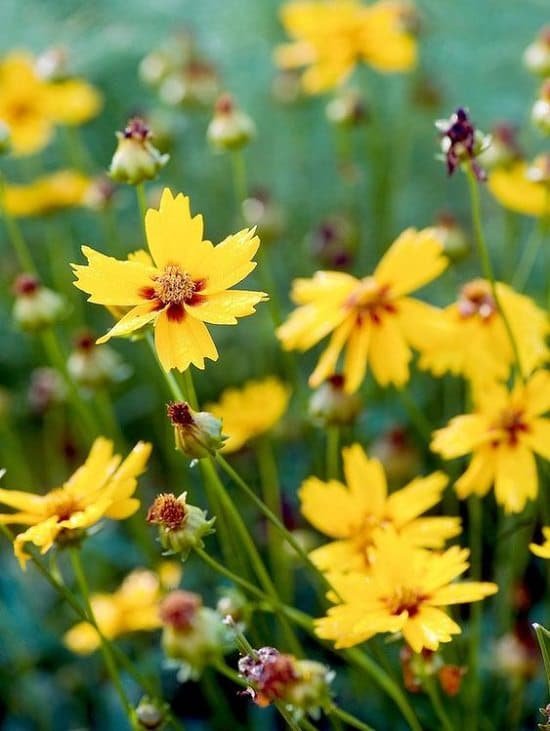
Looking for a beautiful and reliable flower to spruce up your garden? Look no further than the Coreopsis – or Tickseed, as it’s also known. With its striking and long-lasting blooms, this plant is a must-have for any garden enthusiast. Plus, its vibrant yellow color makes it a great option for those who love yellow flowers. For something a little more elegant, consider adding some Daylilies to your collection. These graceful flowers are sure to add a touch of refinement to your space.
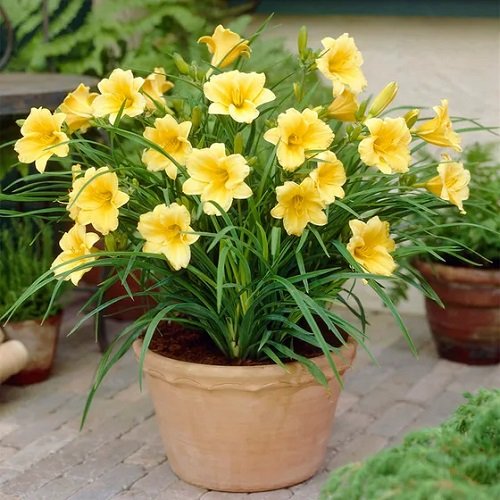
Common Name:
Daylilies
These stunning flowers earned their name for a reason – they only show off their vibrant petals during the daytime and close up as night falls. As houseplants, they bring a cheerful vibe to any room with their sunny yellow blooms.
10. Nymphaea

The Nymphaeaceae family, commonly known as water lilies, is a group of plants that are renowned for their beauty and elegance. If you’re looking to add some vibrant hues to your aquatic garden, you can’t go wrong with the stunning yellow varieties of these flowers. The yellow water lily is a particularly excellent choice for this purpose. Another flower worth considering for a splash of color is the Narcissus.

Helleborus, a plant that’s become increasingly popular with gardening enthusiasts, is known for its stunning appearance and easy upkeep. It’s the perfect choice if you’re looking for something both beautiful and low-maintenance to add to your floral arrangements.

These beautiful flowers are known as Helleborus scientifically and are a delightful sight to behold during the early days of spring, signifying the end of the winter season. If you’re searching for yellow flowers, choosing Helleborus would be an excellent option due to its unique beauty. The Chrysanthemum flower is also another fantastic choice that has a charm of its own.
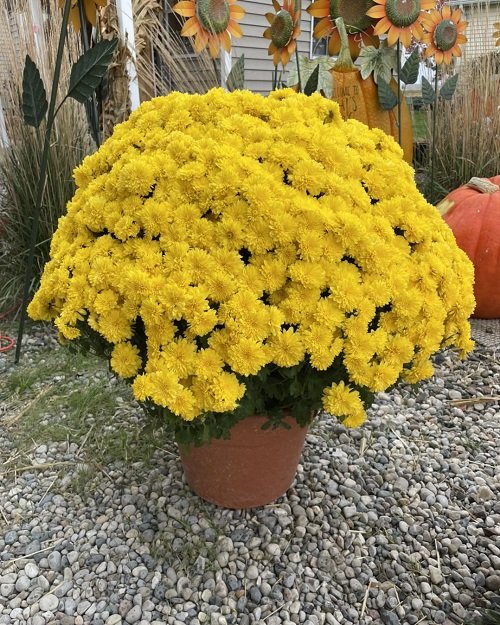
Experience the wonders of Jason’s Pumpkin Patch, where you can marvel at a variety of botanical gems. One of its prized possessions is the Chrysanthemum, a flower that can be found in various regions of the world. Its beautiful blooms in shades of yellow can add a unique touch to any floral display. Another standout feature is the Bulbine plant, which has a distinctive appearance that’s sure to catch your eye. Take a trip to Jason’s Pumpkin Patch and discover all of these floral treasures and more!
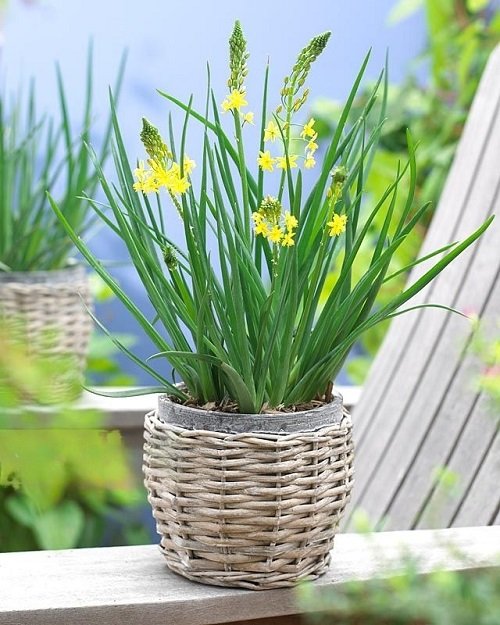
Commonly known as the wandering buttercup, the Bulbine plant boasts of bulbous tubers and beautiful star-shaped flowers. This makes it a popular option in the yellow flower category.
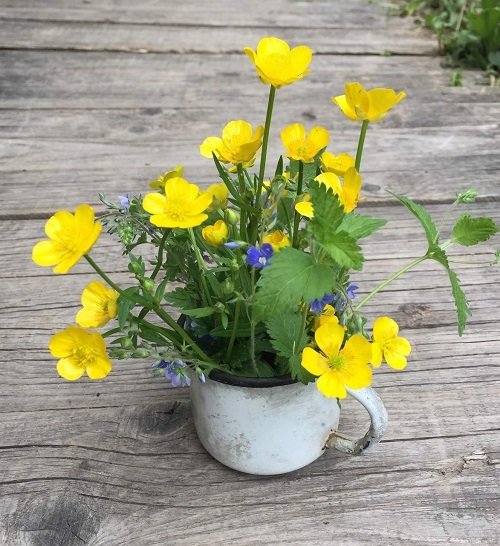
The creeping buttercup, also called Ranunculus repens or Bulbous Buttercup, is often viewed as a weed, but it actually has the potential to be a great choice for groundcover due to its appealing yellow flowers. This plant is a popular option for those who want a creeping plant.

The meadow buttercup, scientifically named Ranunculus Bulbosus, boasts an exceptional trait of sepals that hang downwards, which distinguishes it from other flowers. It is widely regarded as one of the finest yellow flowers in the market. Another iconic yellow flower is the sunflower.

Check out the official Latin name of this stunning plant – Helianthus annuus! Sunflowers are definitely some of the most captivating yellow blossoms that you can come across. Their bright and cheerful color is sure to grab your attention. Don’t forget to plant them in your garden! Furthermore, you may also want to consider adding the delightful Lily to your assortment.
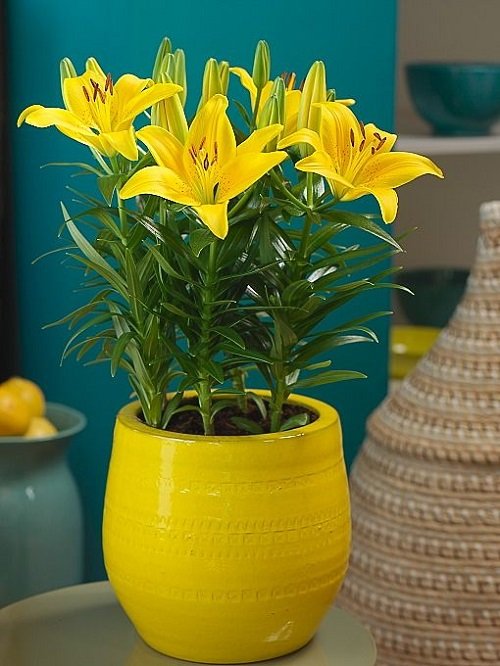
Garden enthusiasts across the globe have a great fondness for Begonias, scientifically referred to as Begonia, due to their pleasing appearance. It’s no wonder that these beautiful flowers, especially the yellow ones, are among the most sought-after.

If you’re looking for a beautiful and unique yellow flower to add to your garden, the Begonia plant is worth considering. With various hybrid options available, the Begonia Roseform Yellow is a standout choice. Alternatively, the Zinnia flower offers several shades of yellow to choose from. Adding these stunning flowers to your outdoor space is sure to bring some vibrancy and beauty to your garden.
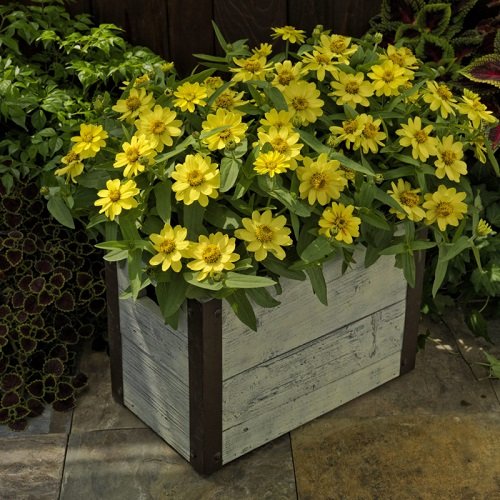
Zinnias, also called Zinnia in scientific terms, are not only a treat to the eyes, but they also have the power to draw in bees and butterflies. These flowers stand out for their prolonged freshness and lively hues, which make them a go-to option for those who want to add a pop of yellow to their garden. Moving on, let’s talk about another gorgeous flower, the Hibiscus.
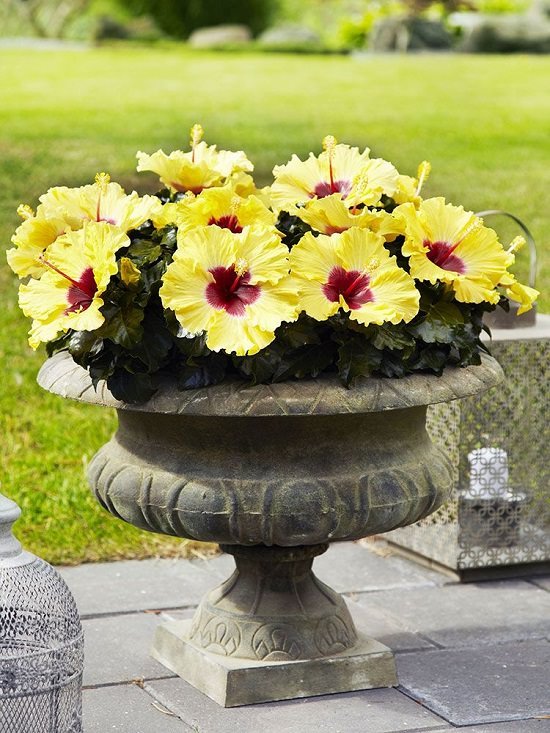
Hibiscus, popularly known by its scientific name Hibiscus, is a much-loved plant in the world of flower lovers. The yellow variety of this plant with its big and eye-catching blooms is sure to impress anyone who admires flowers. With a diverse spectrum of hues, it’s no surprise that yellow hibiscuses are among the top picks when it comes to yellow flowers. If you’re looking for a unique alternative, yarrow is definitely worth checking out.

If you’re looking for a low-maintenance yet visually appealing plant for your outdoor area, consider trying out the Gerbera Daisy. This charming yellow flower is perfect for lining your garden or adding to an open landscape, and creates a stunning contrast when combined with plants like lavender or purple sage. Undoubtedly, the Gerbera Daisy stands out as one of the most captivating yellow blossoms on the market.

If you want to bring some brightness to your indoor area, why not cultivate the Tulipa Yellowensis? It’s a lovely yellow tulip that can be grown inside your home. This flower not only has stunning petals, but it also serves as an excellent indoor plant. Follow our instructions to discover how to grow your own fantastic yellow tulips indoors. Prepare yourself to add some charm to your living space with these splendid blossoms!
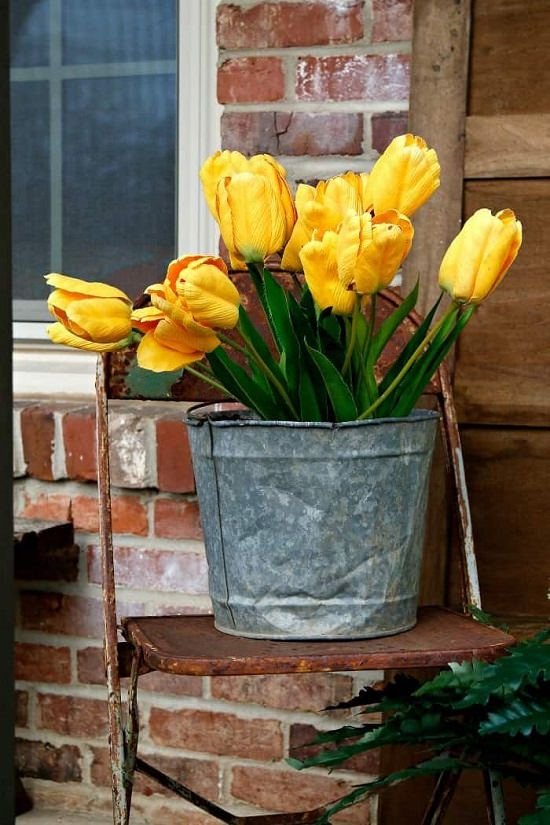
Tulipa is the official name for tulips, and we simply love these flowers because of their wide selection of colors ranging from reds to purples and yellows. If you’re on the lookout for yellow flowers, then tulips are definitely a good choice. And finally, ranking 25th on our list is the elegant Calla Lily.
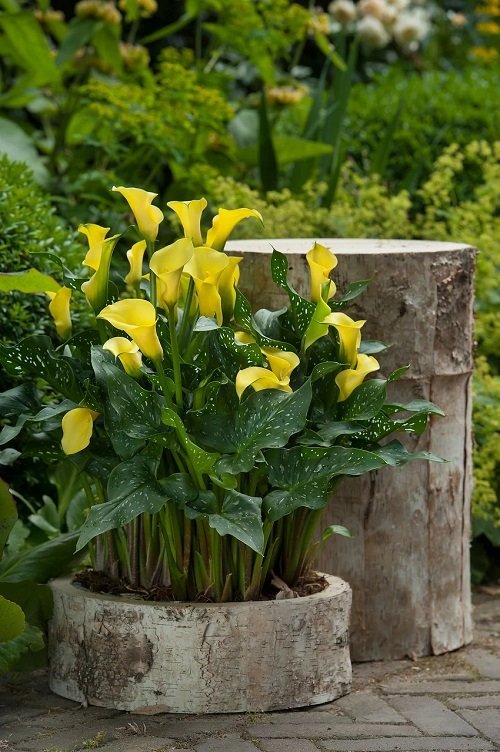
The Zantedeschia, or Arum lily, often gets confused for true lilies because of their similar appearance. However, their stunning yellow petals set them apart and make them a standout among other flowers of the same hue. These blossoms are part of an exclusive group of yellow flowers that are definitely worth taking a look at. Alongside the Arum lily, the well-known Marigold is also a notable member of this category.
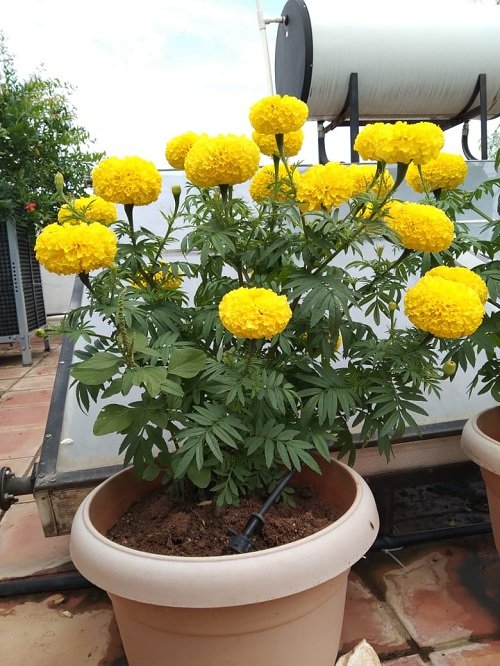
Looking for a way to spruce up your outdoor space and bring some happiness to your surroundings? Why not give Tagetes a try? This delightful flowering plant is a popular choice for gardens, and can even be planted alongside your veggies for an extra pop of color. So why not add some lovely Tagetes to your yard and brighten things up with a little sunshine?
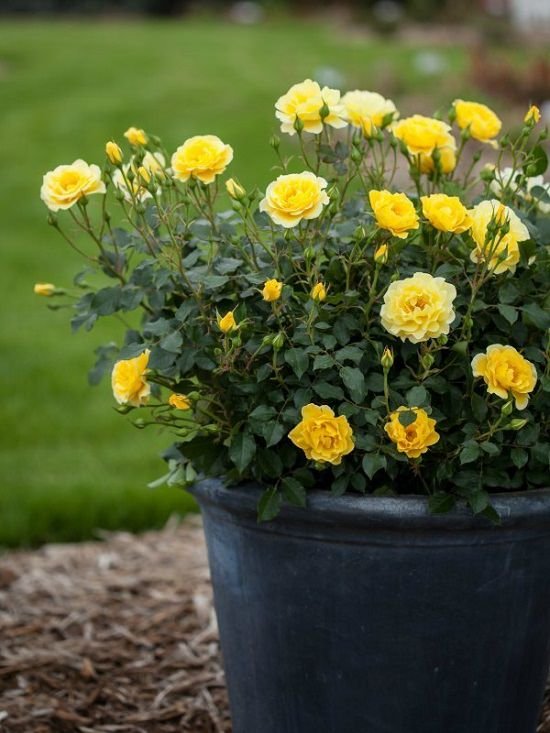
If you want to bring some bright and joyful vibes to your garden, why not try planting Yellow Cestrums? These beautiful flowers, also called Cestrum aurantiacum, are a fantastic option for those seeking yellow blooms. Not only do they come in a lovely shade, but their sweet scent is guaranteed to catch anyone’s attention.

The plant, also known as Cestrum aurantiacum, boasts stunning yellow cylindrical flowers that emit a delightful scent, particularly during the evening. It goes by the scientific name of Lesser Celandine and is the 29th plant on the list.
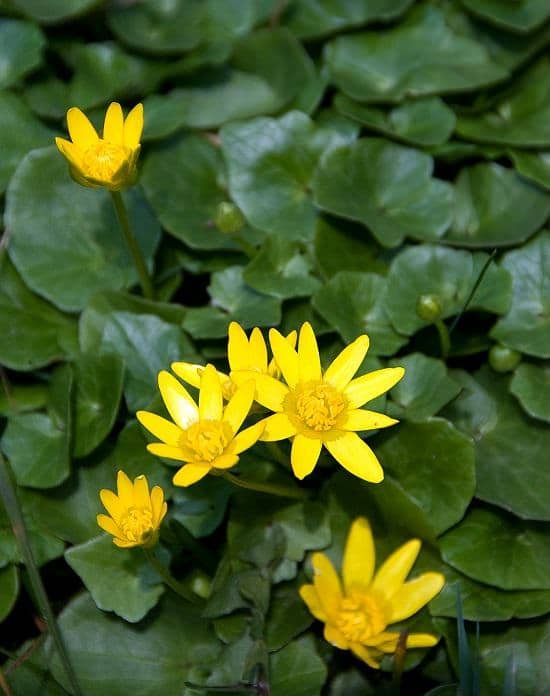
The Ficaria Verna, or the lesser celandine, is a delicate plant with lovely star-shaped flowers that tower over its leaves. It’s a popular choice for those who adore short plants with yellow blooms. If you’re looking for a different option, Leontodon might be worth considering as it’s ranked at number 30 on the list.
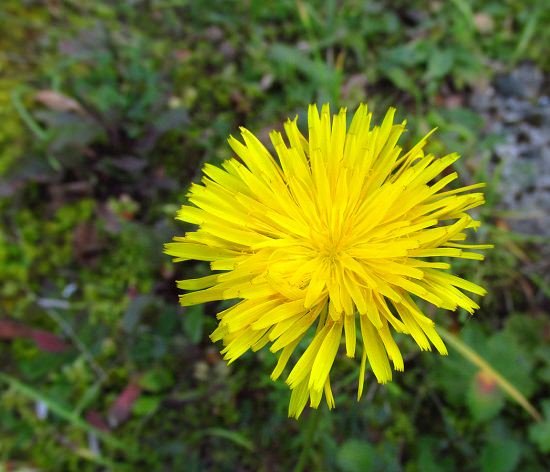
Have you ever come across a beautiful yellow flower while walking through fields or rocky paths? Chances are, you’ve stumbled upon the Leontodon plant. This lovely plant stands out due to its enchanting shade of yellow and is one of the most delightful types of yellow flowers. It’s also known as the Bear’s Ear, which adds to its unique appeal.
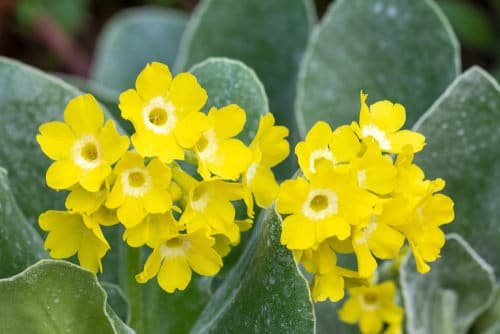
The beautiful and charming flower known as Primula auricula, or cowslip, is sure to catch anyone’s eye with its unique name and lovely appearance. Out of all the yellow flowers out there, this one is definitely among the most captivating.
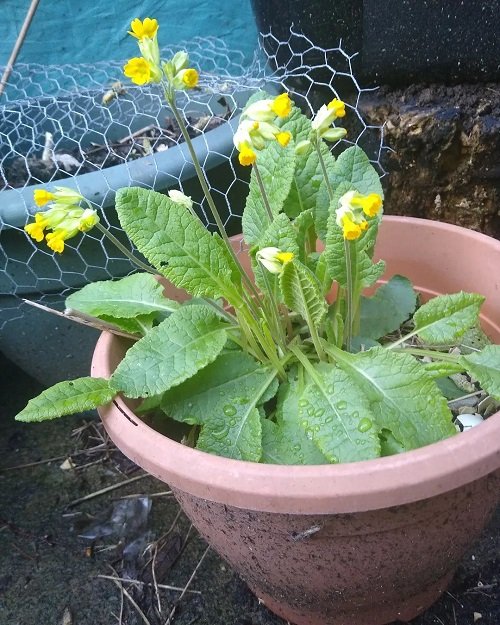
The Primula Veris is an eye-catching plant that features slender stems and delicate, bell-shaped flowers that sway gracefully in the wind. It’s a favorite option for those who adore lofty plants bursting with vibrant yellow blossoms. Additionally, the charming Calendula deserves a mention as well.
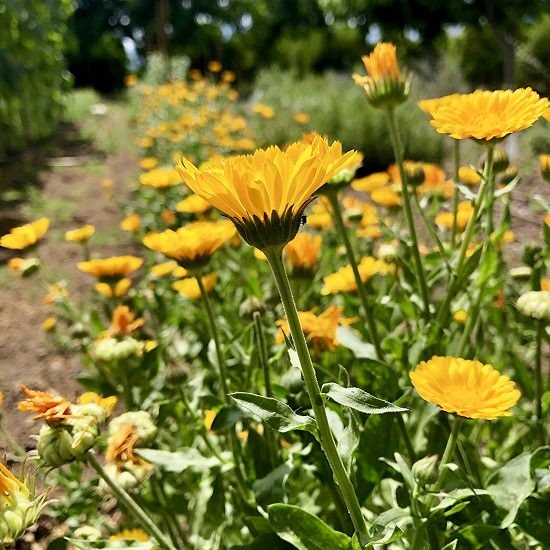
Pot marigolds, scientifically named Calendula officinalis, are a unique type of flower that should not be mistaken for marigolds. These beautiful flowers boast stunning bright yellow petals, making them a sight to behold. What’s more fascinating about these flowers is that they are not just visually appealing but can also be ingested. Undoubtedly, they are one of the most fantastic yellow flowers you’ll ever come across. Another yellow flower worth mentioning is the Canna Lily.

It’s fascinating that the scientific name for Canna is merely “Canna” itself. Despite their name, these flowers are not related to Lilies, but they instead belong to the same botanical family as ginger and banana plants. These stunning flowers are highly admired due to their vibrant yellow petals. Dahlia, another colorful bloom, holds the 35th spot on our list.

The Dahlia plant, renowned for its stunning appearance, is often referred to as Adrbulbs. It boasts a diverse range of vibrant colors including red, yellow, orange, white, and purple, all of which produce magnificent blooms. Additionally, the Portulaca is another noteworthy flowering plant worth mentioning.
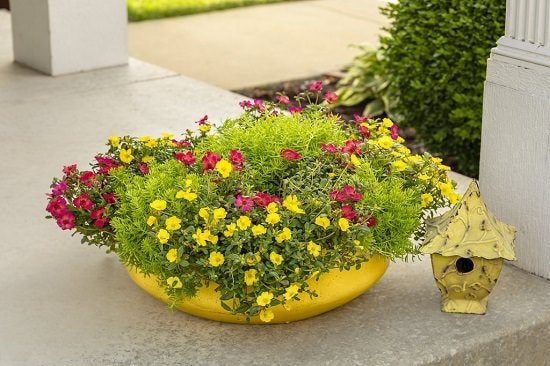
If you’re a fan of gardening and live in a warm area, you might want to add Portulaca grandiflora, also known as rose moss, ten o’clock, Mexican rose, moss rose, Vietnam Rose, the sun rose, rock rose, or moss-rose purslane to your collection. These colorful yellow flowers are a perfect addition to any garden! Don’t worry if you live in a colder region, as they can still be grown as annuals. Yellow Oleander is another great option for those looking for a stunning yellow flower.

The Cascabela thevetia shrub is a lovely addition to any garden with its striking yellow blossoms and resilient nature. However, it’s important to be aware of its highly toxic properties, which has led to its nickname as the “suicide tree.” Consumption of its leaves can lead to serious health issues. For a safer alternative, consider the beauty of the Freesia flower.

Freesia, scientifically referred to as Freesia, is a well-known flower that has made it to the top of the list of flowers with the most pleasant aroma. This attractive yellow bloom is renowned for its sweet scent. Carolina Jasmine is another flower that falls in the same category, ranking at number 39 on the list.

Gelsemium Sempervirens, also known as Yellow Jasmine, is a lovely plant that boasts of golden-yellow flowers and a pleasant aroma. Despite its nickname, it’s not related to the jasmine family. However, it’s essential to note that every part of the Yellow Jasmine plant is poisonous. If you’re looking for a safer alternative with stunning yellow flowers, Carnations are an excellent option.

Geraniums, also known as Pelargonium, are a popular plant species highly valued for their breathtaking and enchanting flowers. These plants are admired for their vibrant hues and the way they form clusters on fragile stems.

The Geranium, a perennial plant with the scientific name, is widely known for its stunning blue flowers that bloom from June until frost. It’s amazing to see how these blooms come in different shades, from a subtle white up to a deep blue hue. Having this beautiful plant in your garden will surely make it more unique with its lovely blue and yellow blossoms. If you’re looking for another plant to add, you might want to consider the Golden Butterfly Bush as well.
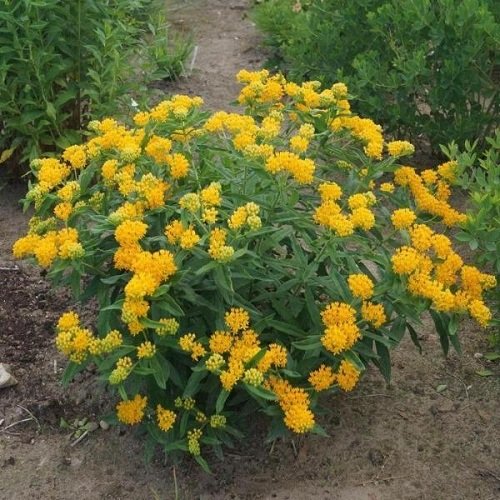
The beautiful Butterfly Bush, scientifically called Buddleja × weyeriana ‘Honeycomb’, is an exquisite shrub that features lance-shaped leaves and gracefully curved branches. This aromatic plant is famous for its sweet fragrance, making it a highly coveted plant to grow in any garden. Its vibrant yellow flowers create a cheerful accent to your outdoor area. Moving forward, let’s shift our attention to the Jessamine, which sits at number 45 on our list.
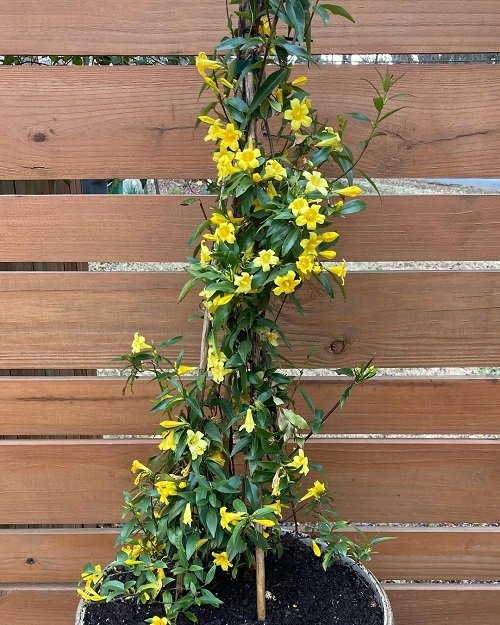
The Wildwood Garden is a delightful botanical paradise that showcases a variety of stunning plants, including the Yellow Jessamine or Gelsemium sempervirens. This climbing vine blooms early and boasts beautiful funnel-shaped flowers with bright yellow petals, adding a touch of elegance to any garden. Another noteworthy plant in this garden is the Dutch Hyacinth, which is equally impressive and impossible to miss.

Flower Name:
Yellow Queen Hyacinth (Hyacinthus orientalis)
The Yellow Queen Hyacinth bulb blooms in the spring and produces stunning ball-shaped flowers on delicate stems. It’s easily one of the most beautiful yellow flower varieties out there. However, I’m unable to rephrase “Snapdaon” since it doesn’t relate to the original text.
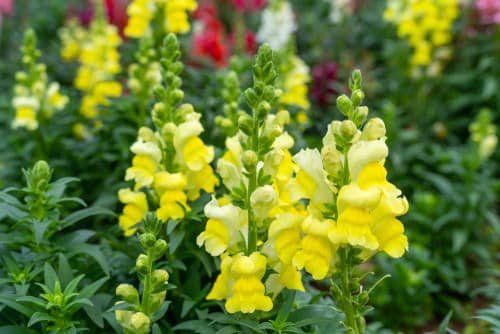
The Antirrhinum majus, commonly known as snapdragon, is a widely recognized and favored plant that boasts a spectrum of vivid colors, except for blue. Its yellow shades are particularly striking to the eyes. Meanwhile, the Bird of Paradise is another remarkable plant worth mentioning.

Spice up your indoor or outdoor area with Londerzeel’s Desert Rose. The Bird of Paradise, also called Strelitzia reginae, is a breathtaking perennial bloom that brings an unusual feel to any space. If you want something different, try the yellow Strelitzia reginae ‘Mandela’s Gold’. Additionally, the Busy Lizzie is an admired plant that adds a burst of color to your plant collection.

Sandra, known online as sandra.sequeira.12, recently shared some advice on how to jazz up your garden with a burst of color using Impatiens walleriana or Busy Lizzie. These flowers come in a variety of bright shades and thrive when planted near each other. Furthermore, if you’re searching for another yellow flower, Sandra suggests giving Yellow Corydalis a try.

The Yellow Elder, commonly known as Corydalis, is a plant that boasts of its unique tubular shape. Its scientific name is Pseudofumaria lutea. This plant thrives in areas with partial shade and is also known for its resilience against certain types of pests.
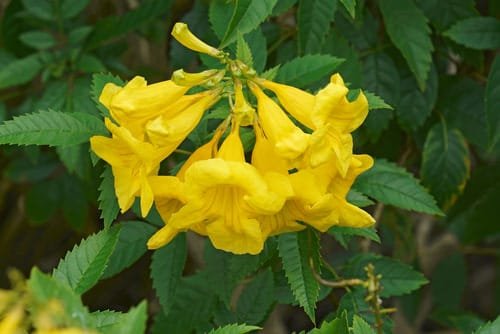
To add a stunning touch of yellow to your garden, consider planting the Tecoma stans, also known as yellow bells. These bell-shaped flowers come in a striking canary yellow shade that is sure to catch anyone’s attention. They are truly one of the most remarkable yellow flowers out there. Another excellent option for adding a cheerful and bright color to your garden is the yellow petunia.
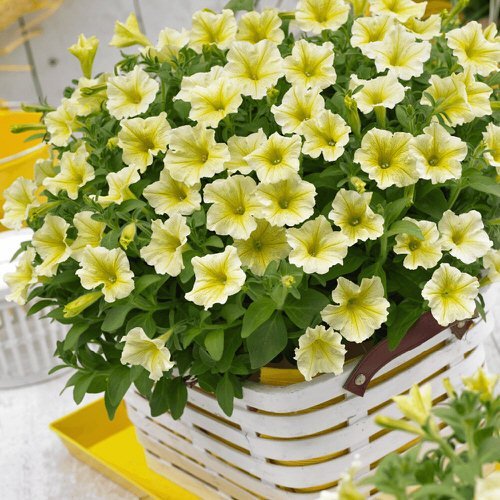
Meet the charming Yellow Easy Wave Petunia, an exquisite plant that boasts a unique color gradient, starting with white petals and gradually transitioning to a beautiful yellow shade towards its center. While not entirely yellow, the subtle tint adds to the plant’s appeal and beauty. For an equally stunning yellow plant, look no further than the Yellow Lantana, an exceptional option to explore.

If you’re on the hunt for an attractive plant that doesn’t require much maintenance and boasts stunning yellow blooms, then look no further than Lantana camara ‘Yellow Trailing.’ With its clusters of bright yellow flowers, this lantana variety is sure to catch your eye. Not only is it breathtaking, but it’s also easy to care for. Its vibrant blossoms make it one of the most outstanding types of yellow flowers out there. However, if you’re seeking additional options, you might want to consider the charming Yellow Cosmos.

The Yellow Cosmos, scientifically referred to as Cosmos sulphureus, is a flower that showcases exquisite yellow petals that emanate from its core, producing a lively burst of color when added to any outdoor area. Its captivating beauty is guaranteed to brighten up your surroundings.

Explore the allure of East Bay Wilds and the extraordinary variety of plant and animal life it has to offer. One of its standout features is the Yellow Lupine, scientifically known as Lupinus densiflorus. These flowers possess impressive elongated spikes with vibrant, yellow blooms that add a striking and bold touch to any garden or meadow. It’s no surprise that these captivating blossoms are highly coveted. Another noteworthy plant to admire in this collection is the Yellow Lady’s Slipper.
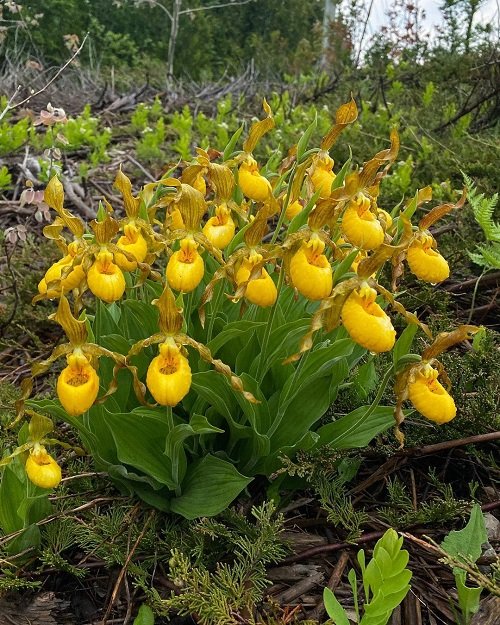
In a recent post by “the_buckeye_botanist,” the botanical name Cypripedium parviflorum, also known as Yellow Lady’s Slippers, is explained in detail. The flower is renowned for its charming appearance, resembling a delicate slipper with vibrant yellow petals and sepals that enhance its beauty. The post also briefly mentions the Yellow Columbine, adding to the overall knowledge shared.
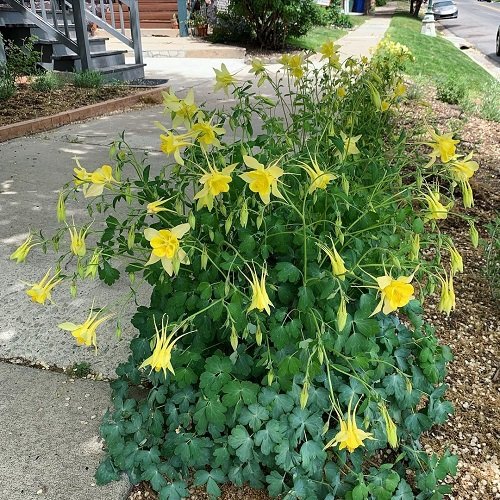
The flower known as Yellow Columbines, or Aquilegia chrysantha in scientific terms, has a unique lantern shape with spurs at the back that makes it stand out. Its playful and exotic appearance can add a touch of charm to any garden where it thrives.
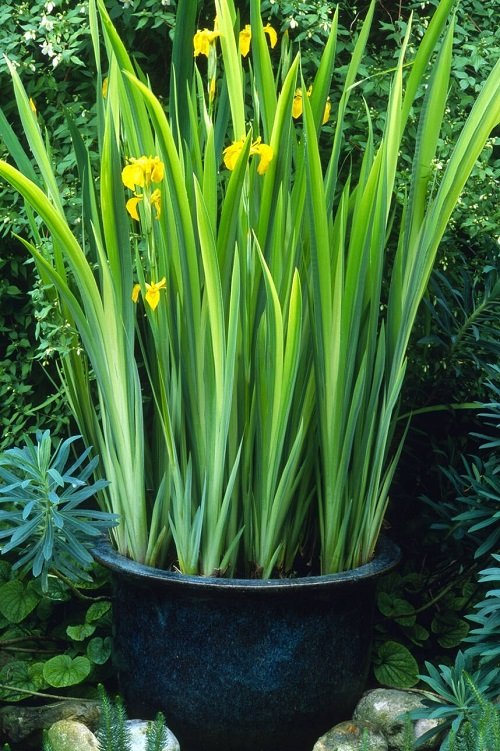
Yellow Trilliums, scientifically known as Trillium luteum, are a delightful species of flowers that can add a touch of vibrancy to any garden or outdoor space. Their unique three-petal shape and bold yellow color make them an excellent option for brightening up any setting. Without a doubt, if you’re searching for yellow flowers, Yellow Trilliums are a wonderful choice.

The Yellow Trillium, also known as Trillium luteum, is a charming and sophisticated flower that boasts a delicate yellow appearance with three leaves and petals. Its stunning yellow hue makes it a perfect addition to any garden, effortlessly elevating its beauty. Another equally stunning option is the Yellow Primrose, which can add a lively and vibrant pop of yellow to your outdoor area with its bright and bold color.
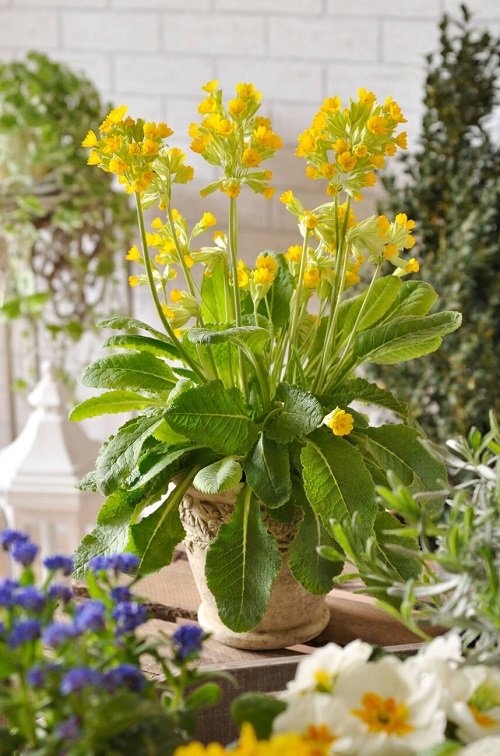
Yellow Primroses, also known as Primula veris, are a wonderful addition to your garden or pots to enhance their look. Their exquisite petals and vibrant yellow color exude joy and elegance, making them hard to miss. If you’re looking for another plant alternative, Yellow Alliums could be worth considering.

The Yellow Alliums, also called Allium moly, have a unique appearance with a cluster of small, yellow star-shaped flowers on tall, sturdy stems. They make a great addition to any garden or landscape design and are sure to impress anyone who sees them. Another name for these flowers is the Yellow Pincushion Flower.

If you’re in search of a charming addition to your rock gardens or potted plants, the Yellow Pincushion Flower – scientifically known as Scabiosa ochroleuca – is a wonderful option. Its circular flowers are not only pleasing to the eye but also rank among the most beautiful types of yellow flowers available. Alternatively, if you’re a fan of yellow flowers, you may also consider the Yellow Foxglove.

If you’re on the hunt for eye-catching yellow flowers to add to your garden, look no further than the Digitalis grandiflora (aka Yellow Foxgloves). With its slender stems and exquisite trumpet-shaped blooms, this plant exudes an air of elegance and royalty that’s hard to miss. But if you’re looking for another equally stunning option, consider the Yellow Ginger Lily, which boasts blooms just as gorgeous as those of the Foxgloves.
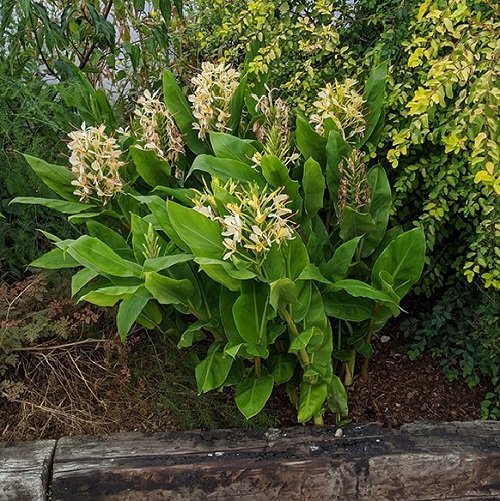
Are you familiar with the Hedychium flavescens? It’s a scientific term for the stunning Yellow Ginger Lilies that can add a tropical touch to your garden with their lemon-yellow flowers. Another plant that can enhance the beauty of your outdoor space is the Mimulus guttatus, also known as the Yellow Monkeyflower, which features a striking shade of yellow.
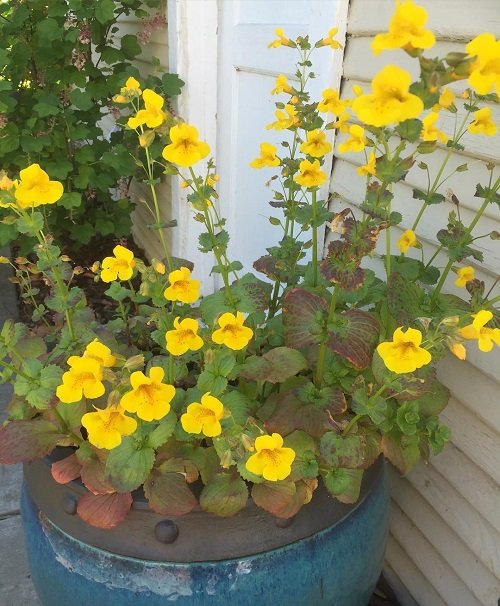
Introducing the charming Yellow Monkeyflowers, scientifically named Mimulus guttatus. Their bright and cheerful snapdragon-like flowers are sure to catch your eye with their vivid yellow hue. Adding these lovely plants to your garden or container plants can effortlessly bring a fun and playful vibe. Don’t miss out on the opportunity to include this stunning plant in your collection!
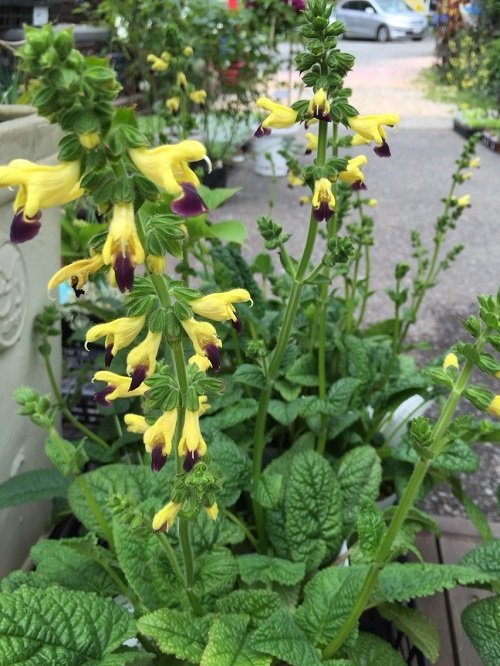
Yellow Sage, scientifically known as Salvia flava, is a versatile plant that can elevate the aesthetic value of any garden or landscape. Its attractive yellow blooms and fragrant silver-green leaves add a pleasant visual appeal and texture to the surroundings. This plant is perfect for those who prefer verdant foliage and lively yellow flowers. Moreover, it is also referred to as Yellow Gorse.

The Yellow Alpine Poppy, scientifically referred to as Papaver alpinum, is an absolutely stunning variety of yellow flowers that can really catch one’s eye with its breathtaking looks. One can’t help but get mesmerized by its striking petals in vivid yellow hues that contrast beautifully with the sharp green foliage. This flower type is particularly bewitching in locations with high elevations and is definitely deserving of admiration.

If you have a green thumb or aspire to be a gardener, then you must explore the Gardentags app. It is an inclusive app that aims to make gardening simpler and more enjoyable. With its numerous functions, you can obtain expert advice, post images of your plants, recognize them, and curate a plant wishlist for your garden. Moreover, you can interact with other plant enthusiasts and learn about new species to enhance your collection. Gardentags can help you transform your area into a breathtaking garden sanctuary in a hassle-free manner. So, why wait? Download Gardentags today and start your thrilling gardening adventure!
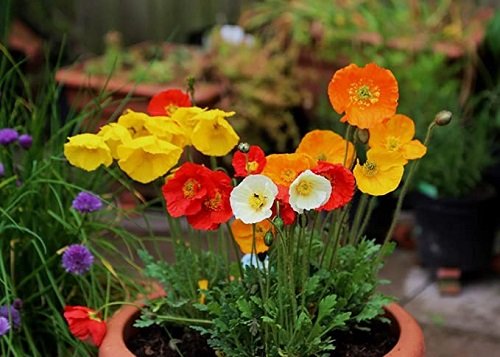
If you’re looking for a way to add a touch of sophistication to your indoor space, the Yellow Rockrose (Cistus x pulverulentus ‘Sunset’) is the perfect choice. Its sunny yellow flowers and delicate powdery leaves create a beautiful contrast that will draw the eye of anyone who enters your home.

If you’re a fan of brightly-colored flowers, you’ll love Lotus corniculatus, also called Yellow Bird’s Foot Trefoil. This unique plant can really make a statement in your garden with its beautiful yellow hue and standout shape. It’s especially perfect for those living in dry or Mediterranean climates. Make sure to add this stunning flower to your must-have plant list!

If you want to inject some fanciful and delightful elements to your wildflower meadow or grassy area, then you might want to think about growing Lotus corniculatus, which is also called Yellow Bird’s Foot Trefoil. This plant features delicate leaves and clusters of bright yellow flowers that can definitely add some radiance to any space. And if you’re curious about exploring more exceptional plants, make sure not to overlook our 72nd addition to the list: Yellow Wood Sorrel.
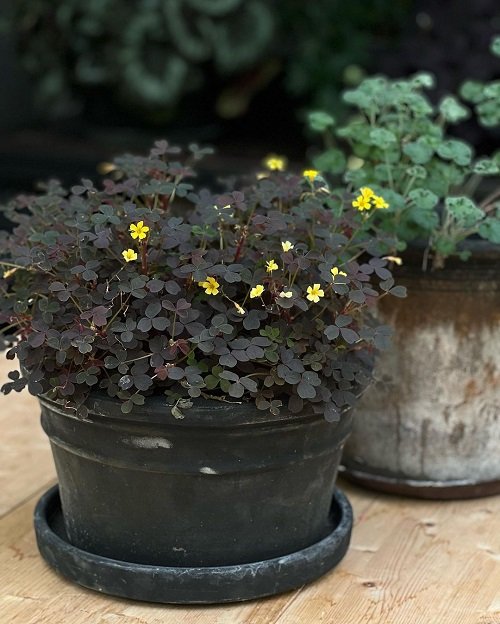
Yellow Wood Sorrel, also known as Oxalis stricta, is a remarkable plant that can add beauty to your garden with its cute heart-shaped leaves and bright yellow flowers. Its natural appeal can enhance the overall attractiveness of your garden, making it an excellent choice for those looking to add a small yellow-flowered plant. To learn more about this captivating plant, check out the linked video above.
If you’re looking to create an eye-catching and lively garden display that can withstand intense sunlight, explore our comprehensive collection of the most vibrant blooms. These hardy flowers can tolerate temperatures up to 100 F (38 C), making them ideal for full-sun locations. Moreover, many of these flowers are also drought-resistant! Let’s get started on discovering the Best Flowers for Full Sun, starting with Pentas.
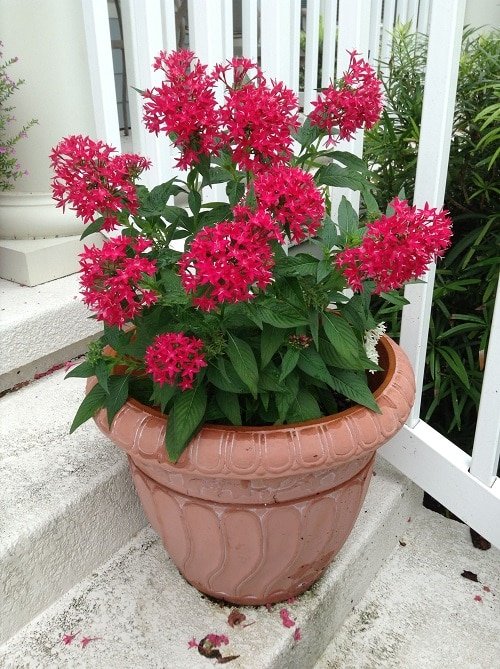
The Pentas plant, or Pentas lanceolata, is a lovely choice for your garden that will no doubt attract pollinators like bees, hummingbirds, and sunbirds due to its nectar production. It’s a resilient plant that can handle hot weather and is an excellent choice for container gardening. Additionally, consider adding Lantana to your garden for another great option.
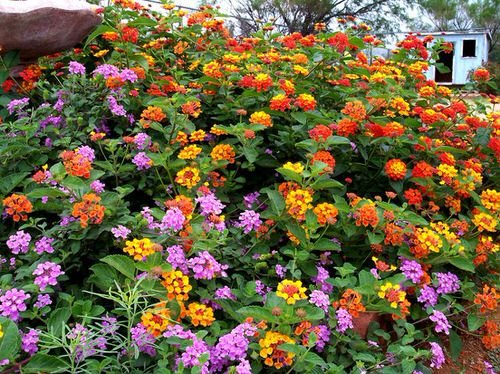
Lantana is a popular flower plant that can be found thriving in tropical and dry climates. This plant is scientifically known as Lantana camara and requires minimal maintenance to grow. Even in high temperatures, it can produce a variety of breathtaking blossoms in vibrant hues such as red, yellow, orange, white, and pink throughout the whole year. For those who are interested in exploring the various types of lantana, it is recommended to check out the suggested collection. If you are looking to incorporate another stunning flowering plant into your garden, Plumbago is also a great option to consider.
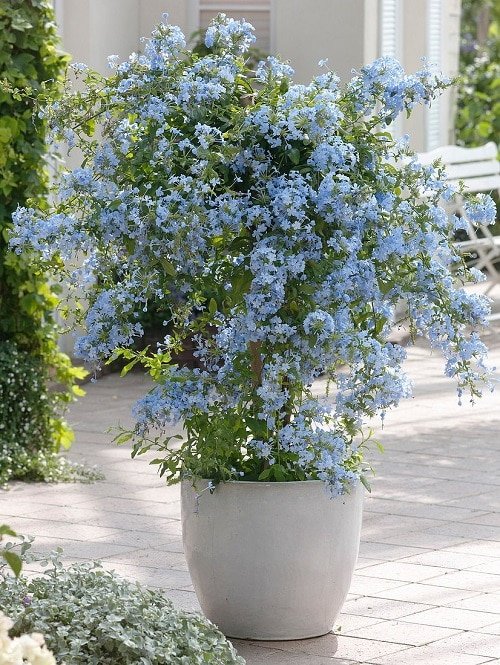
Are you aware of the scientific name of the stunning vine-like shrub commonly known as Plumbago? It goes by the moniker Plumbago auriculata and is native to Africa. This plant thrives in subtropical or tropical regions with little maintenance. Its exquisite sky-blue flowers bloom almost all year round, given that it’s in its preferred environment. For those wondering about USDA zones, Plumbago does best in zones 8 through 12.

If you want to know more about flora and fauna, the perfect source to check out is the “living4media” webpage. They showcase a variety of plants, including the morning glory or Ipomoea alba. This stunning plant boasts of big, sweet-smelling white flowers that come to life in the evening. While it can bloom all year round in subtropical areas, it’s best to grow it annually in temperate regions under direct sunlight. Another noteworthy plant that the website features is the Hibiscus.

Are you considering the idea of having hibiscus in your garden or indoor plant collection? Not only is this plant visually appealing with its vibrant colors, but it is also low-maintenance and comes in a range of hues to suit your liking. Another great thing about it is that it can thrive in different climates, whether it be cooler or warmer. Take a look at the various types of hibiscus available and pick the perfect one for your area. And while you’re at it, don’t miss out on checking out the stunning moss rose variation too!
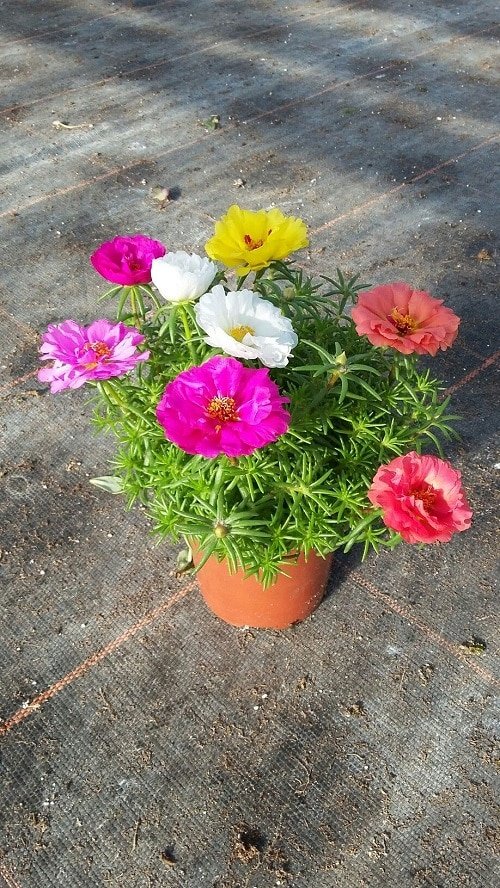
Looking for a plant that can brighten up your garden or container? Look no further than Portulaca grandiflora, commonly known as Moss Rose. These plants have unique needle-like leaves and stunning miniature flowers that can add a splash of color to any setting, be it tropical or temperate. Whether you’re planting them in a hanging basket, window box, or larger container, Moss Rose is a perfect choice. If you’re interested in other colorful options, consider Blanket Flower. For additional details, check out our Moss Rose Growing Tips.
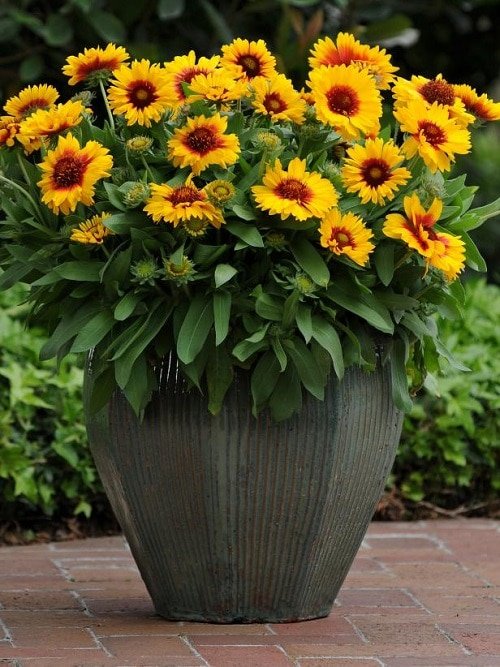
Are you a fan of gardening? If so, why not add gaillardia to your plant collection? This gorgeous plant, also known as blanket flower, belongs to the sunflower family and can withstand intense heat and dry spells. It also makes lovely cut flowers. If you live in USDA zones 7-11, gaillardia will thrive in your garden. For more gardening inspiration, check out our top picks for lantana varieties. And if you’re looking for another flowering plant to add to your collection, King’s Mantle is definitely worth considering.
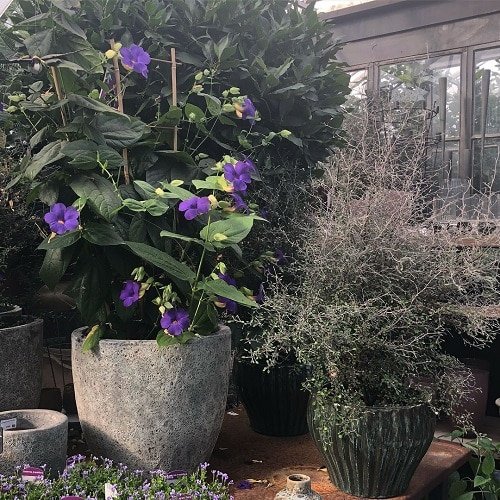
The Thunbergia erecta, also known as the bush clock vine, is an African shrub with a unique and impressive quality – it blooms all year round! Its stunning flowers come in varying shades of violet, purple, and yellow, and it thrives under direct sunlight. This plant is well-known for being a prolific bloomer, making it a popular choice for gardeners in USDA zones 9-11. Another notable flowering plant is the Mandevilla.
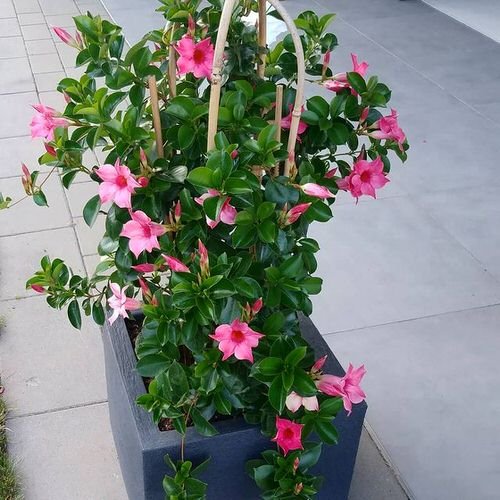
Zahaslowana, scientifically known as Mandevilla sanderi, is a plant variety that can flourish in USDA Zones 6-12. However, those residing in cooler regions may opt to cultivate it as an annual instead. This particular tropical vine flourishes rapidly and can withstand high temperatures, resulting in an abundance of vibrant blooms ranging from pink, white, to red hues. Alternatively, the Bottlebrush plant can also be considered as an alternative.
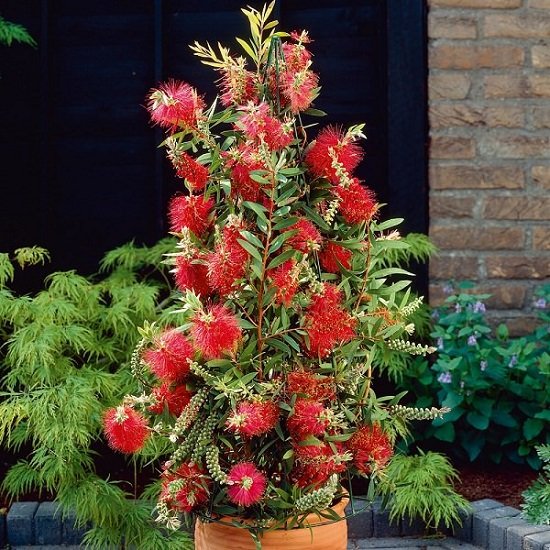
The plant known as Callistemon is an ideal addition to any garden, particularly if you enjoy flowers. This shrub loves the sun and produces fluffy blooms all year round. However, if you reside in a cooler area, it’s best to bring the plant indoors before the freezing weather arrives to guarantee its survival during the winter months. Additionally, you may want to consider adding the lovely marigold to your garden for some extra beauty.

Marigolds, also known as Tagetes, love warm temperatures and lots of sunlight to flourish. To witness their stunning blooms, make sure you plant them in a spot that gets plenty of sunshine. These plants are incredibly versatile, thriving as both annual and perennial flowers, making them perfect for various gardening needs. They’re a popular choice for full-sun everlasting plants, too. If you want to learn about different marigold types and growing them in containers, be sure to give this resource a read. For your garden, you might also want to consider adding Angelonia to the mix!
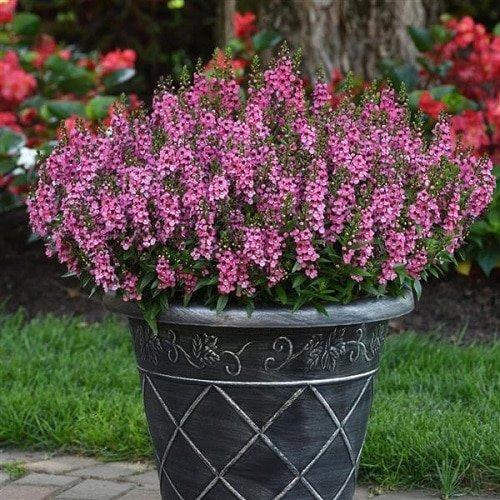
Name of Plant:
Angelonia angustifolia
Growing Zones:
9-11
Looking for a gorgeous plant that can handle the scorching heat of summer while producing an abundance of blossoms? Look no further than Angelonia angustifolia! Known as the summer snapdragon because of its resemblance to the flower, this sun-loving plant is a popular choice among gardeners. Although it’s typically grown as an annual, it comes in a variety of colors including blue, green, orange, pink, red, white, and yellow. So why not add a splash of color to your garden by planting Angelonia angustifolia?
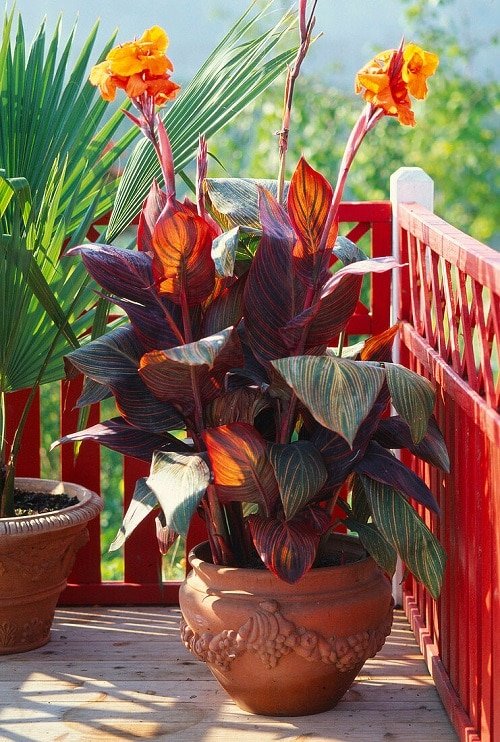
Have you heard of the charming Canna indica? It’s a sun-loving plant that thrives in moist soil and can grow from 1 to 8 feet tall. With its striking colors like red, orange, and yellow, this botanical gem is perfect for your garden. We’ve put together a list of our favorite canna lilies to help you decide which one to add to your collection. And, have you considered adding the stunning Desert Rose to your garden as well?
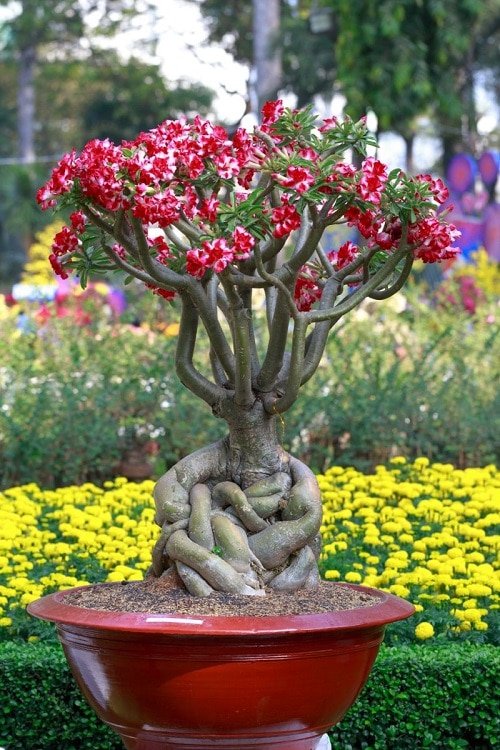
If you’re someone who enjoys having plants around, you might want to think about adding the Adenium obesum, commonly known as the desert rose, to your collection. This particular plant can grow well in USDA zones 9-12 and can even be used as a bonsai. If you don’t live in an area that experiences frost, you could even plant it outside. When the Adenium blooms, its tubular flowers are truly stunning, making for a real treat for the eyes. Even if you live in a more temperate zone, you can still make the most of this plant by keeping it indoors as a houseplant. Have a look at some tips to help your Adenium grow to its fullest potential. Additionally, another plant to consider adding to your garden is the Cock’s Comb.
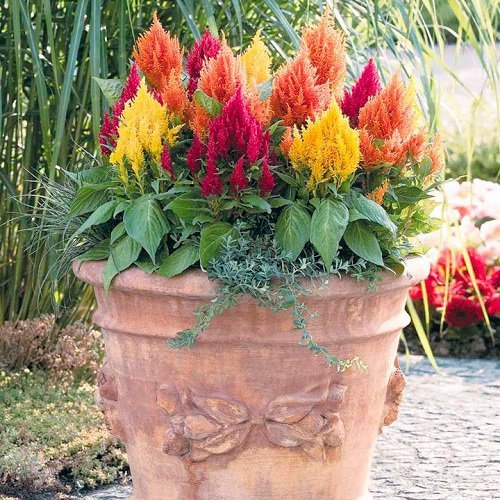
Celosia, also known by its scientific name Celosia argentea, thrives in USDA zones 7-11 and is often grown as an annual plant. This unique plant loves lots of sunshine, making it a great choice for balconies and patios. Adding celosia to your container garden is sure to make a statement. Another lovely flower to consider for your garden is the petunia. Their stunning beauty will definitely add a pop of color to your outdoor space.
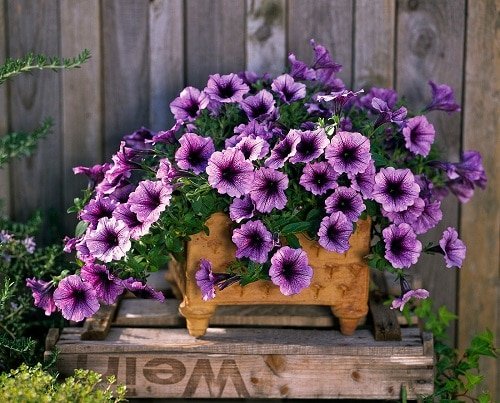
Have you heard of the amazing Petunia × atkinsiana? This beautiful and well-liked flower is an annual that loves sunny and warm weather, making it a perfect choice for gardening enthusiasts. Although it is not resistant to cold weather and is considered an annual in cooler areas, it can actually grow as a perennial in warmer climates. If you’re interested in growing Petunias, we’re here to provide you with all the information you need. On the other hand, if you’re looking for an incredible plant to complement your garden, take a look at the Texas Bluebonnets.
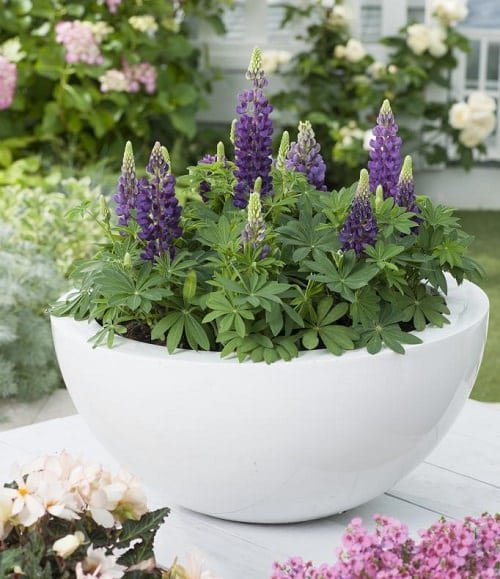
If you’re on the hunt for a cheerful and lively addition to your garden, consider including Lupinus texensis. This flowering plant has been recognized by Fleuroselect as one of their top picks for USDA Zones 4-9, and it’s easy to see why. With its bright and eye-catching colors, bluebonnets are an excellent choice for sprucing up your outdoor area. Not only that, but they’re also the official state flower of Texas, adding some extra flair to your garden. The best part? Bluebonnets can flourish in a variety of settings, from traditional gardens to container setups, making them a versatile option for any type of gardener. If you’re looking for another fantastic plant to add to your collection, check out the Princess Flower.
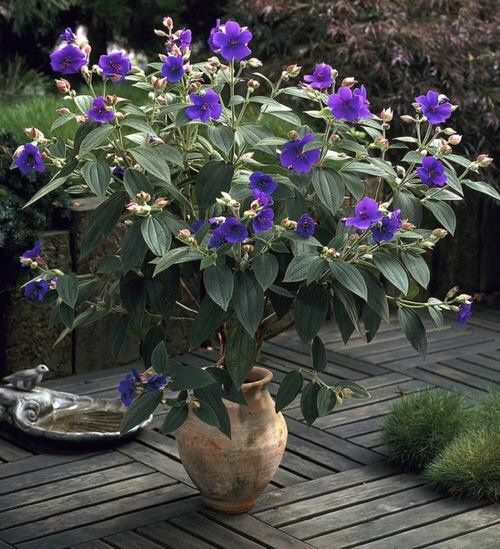
Plant Name:
Tibouchina urvilleana
Appropriate USDA Zones:
9-11
Tibouchina urvilleana, also known as the ‘Princess Flower’, is a versatile plant that can be grown either as a perennial or as an annual. Its stunning silver and fuzzy flower buds mature into dark purple flowers that contrast beautifully against its velvety green leaves, creating a visually appealing display.
19. Salvia

Salvia, known by its botanical name, thrives in USDA Hardiness Zones 9-11. Their dazzling colors ranging from purple and blue to orange and red make them a popular choice for container gardening. To ensure optimal growth, it’s best to choose annual Salvias over perennial variations. While growing these plants may present challenges, the solutions are straightforward. Additionally, Ground Orchids should be considered when growing Salvias.
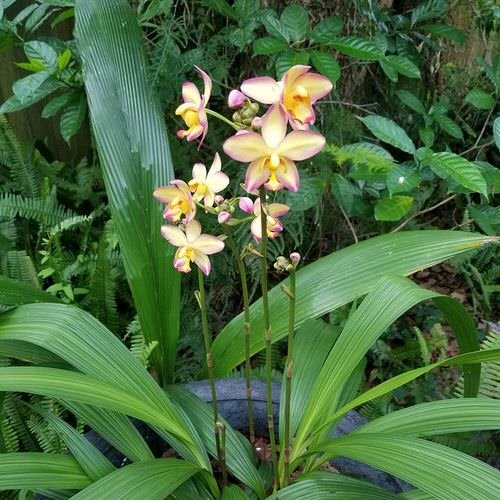
Don’t forget to check out gardenlove.from.amandaland to see the amazing Spathoglottis plicata, also known as ground orchid. The flowers come in beautiful shades of pink and yellow and grow on arching foliage, creating a stunning display. While they can be grown annually, they thrive best in areas with USDA zones 10-12. If you’re looking for unique orchids, be sure to browse their vast selection. For a touch of sophistication in your garden, consider the Diamond Frost Euphorbia – it’s a particularly stunning choice.

Are you familiar with the Euphorbia ‘Diamond Frost’ plant? It’s a stunning species that produces lovely white flowers that last all season long. Although it thrives in sunny locations, it can also do well in partially shaded areas. While it’s classified as a tender perennial, some individuals prefer to cultivate it as an annual in different regions of the world. This plant has an upright growth pattern and a mounding habit. But now, let’s shift our focus to the Bolivian Begonia…
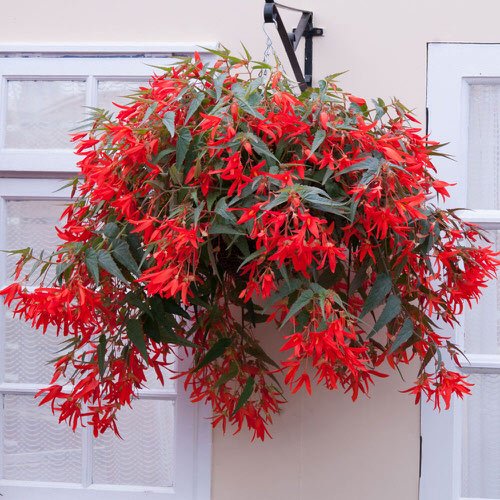
Let’s talk about the Begonia boliviensis, also called the Bolivian begonia, which thrives in USDA zones 8-11. If you’re looking for a plant with bronze leaves that can handle full sun exposure, this is an excellent choice. Its jagged-edged leaves and striking red blooms make it a beautiful addition to any hanging basket or container. Do you want to know how to care for Elatior Begonias? No problem! We have a Care and Growing Guide that can help you out. And let’s not forget Million Bells!
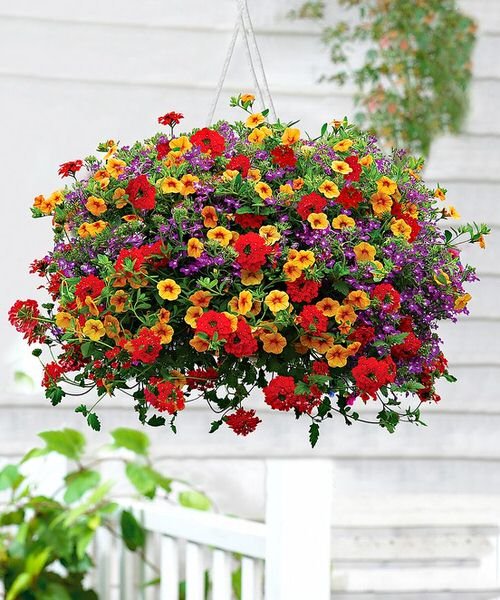
One plant that garden enthusiasts should definitely consider adding to their collection is the Calibrachoa, also known as Million Bells. It can thrive in a wide range of climates and is adaptable enough to be grown as an annual. It requires soil that is well-draining, fertile, and moist. Additionally, it can grow well in partial shade or full sun. This plant boasts a beautiful variety of colors and produces blooms on a regular basis. Another great option to consider is the Bidens.
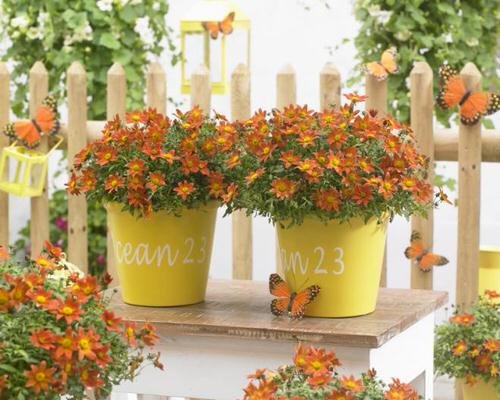
Bidens, which is also called Spanish needles, is a type of flowering plant that grows best in growing zones 6-11 within the United States. If you want to add a splash of color to your container garden, then you should definitely opt for ‘Beedance Painted Red’ Bidens, as it has striking red and gold flowers that will make your garden stand out. You could also consider adding ‘Suntory Lobelia Trailing White’ or ‘Surfinia Deep Red’ to your collection for some variety. Another great choice for container gardening is SunPatiens, which is sure to give your outdoor space a beautiful look.

For those who have a green thumb, why not enhance your container garden with Sunpatiens? These stunning flowers are perfect for any environment since they can flourish in full or partial sunlight. If you want to add a pop of color, the Clear Orange SunPatiens is an excellent choice as it boasts bright orange blossoms that catch the eye. If you’re interested in growing Sunpatiens, there are numerous resources available online that offer helpful tips. Another option to consider is the Sweet Alyssum, which also makes a delightful addition to any gardening project.

If you’re keen on bringing some greenery to your garden, consider Lobularia maritima, also known as ‘Snow Princess’. This plant is robust enough to endure high temperatures and sunlight, and can thrive in USDA Zones 4-10. It boasts regular blooming periods throughout the summer and is versatile enough to be grown in pots. Another classic option for brightening up your outdoor space is the sunflower.
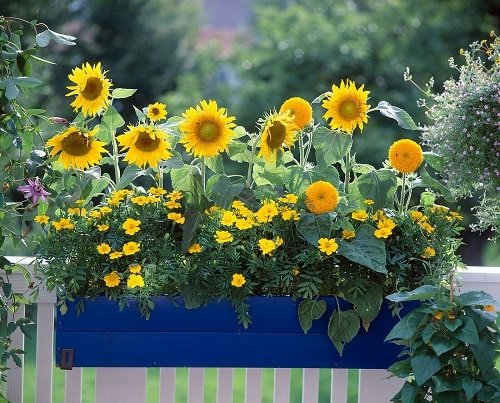
If you want to spruce up your living area with some natural appeal, sunflowers are an excellent option. These vibrant flowers thrive in sunlight and reach their peak during the summer or early fall months. To grow sunflowers in containers, try selecting Lemon Queen or Solsation Flame varieties. Alternatively, if you prefer white sunflowers, check out our top picks, including the captivating Globe Amaranth.

Are you aware of the amazing Gomphrena globosa plant? Its versatility allows it to thrive in various regions, ranging from USDA Zones 2-11. Boasting stunning, lollipop-shaped flowers in shades of pink, purple, and red, this plant is a huge hit among butterfly enthusiasts. Additionally, you might want to consider the Spider Flower as another excellent addition to your garden.
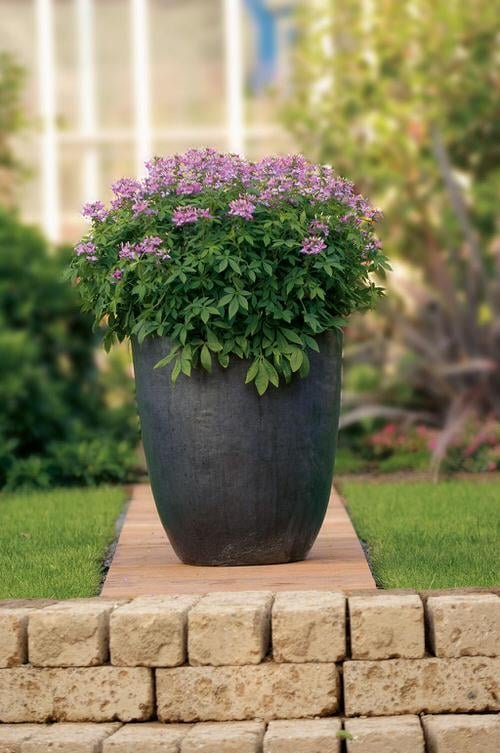
Señorita Rosalita cleome, also known as Cleome spinosa, is a plant admired for its stunning appearance and adaptability. Typically cultivated in USDA Zones 8-11, the plant is an ideal choice for container gardening since it doesn’t have thorns. This annual beauty thrives in warm and sunny regions, thanks to its colorful flowers and straightforward cultivation process.
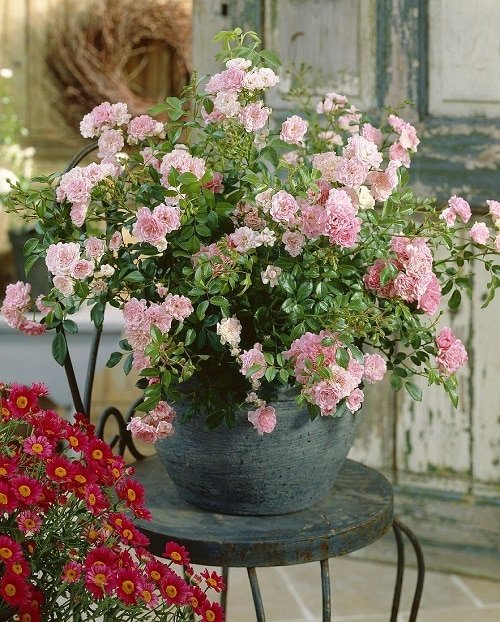
Living4media, a website focused on gardening advice, has shared helpful tips on how to cultivate roses in containers. Roses, scientifically known as Rosa, can grow well in USDA zones 3-11, making them adaptable and easy to cultivate in various areas. Container gardening is an efficient way to grow roses on balconies, patios, decks, and entryways without taking up much space. To promote healthy growth, it is essential to expose the rose plant to at least 5-6 hours of full sun exposure daily and ensure proper air circulation. To learn more about growing roses and other plants, visit the link provided by the website. Apart from roses, Bougainvillea is another plant that Living4media suggests gardeners explore.

The Golden Trumpet Flower is an exquisite and unique botanical that can add a touch of sophistication to your garden. It thrives in warm and humid weather conditions, making it perfect for tropical or subtropical locations. This plant produces exceptional trumpet-shaped flowers that are usually yellow or gold and blooms throughout the year.
Growing the Golden Trumpet Flower requires ample sunlight and sufficient watering. It’s crucial to keep the soil moist but not waterlogged as it might cause root rot. In addition, occasional fertilization can promote robust growth and vibrant blooms.
If you intend to incorporate the Golden Trumpet Flower into your garden, it’s advisable to research its particular care needs thoroughly. With proper attention and care, this plant can offer years of beauty and joy.
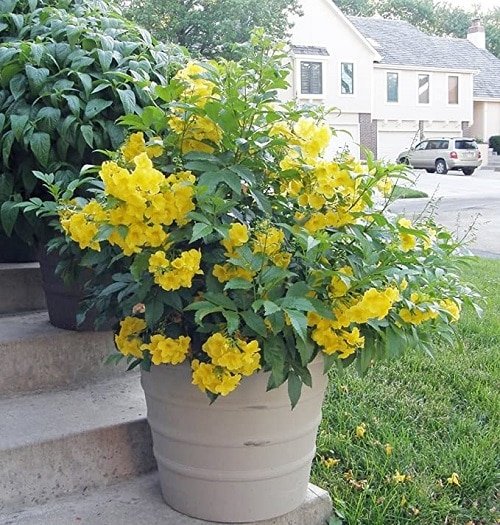
Plant Name:
Bleeding Heart Climbing Vine
Recommended USDA Zones:
7-11
This lovely climbing vine thrives in areas with a warm climate and no frost, making it the perfect addition to your garden. It requires plenty of sunshine to grow its beautiful tubular flowers that come in shades of pink, red-orange, and yellow. Whether grown as a border plant in containers or trained to climb, the Bleeding Heart is sure to add a stunning touch to any garden.
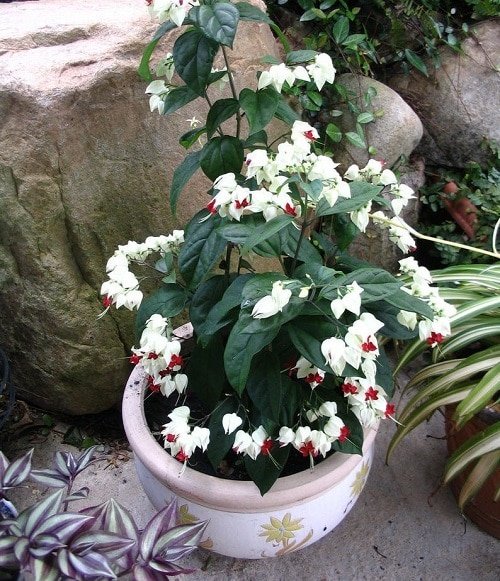
If you’re a plant enthusiast, the Clerodendrum thomsoniae, or bleeding heart vine, is definitely worth having in your collection. This fascinating plant thrives in USDA zones 9-12 and requires ample sunlight to showcase its splendor. During the spring and summer, the bleeding heart vine produces magnificent clusters of star-shaped flowers that are bound to mesmerize anyone who sees them.

The Nerium Oleander is a robust shrub that can endure harsh conditions, and it also has a scientific name. It thrives in USDA Zones 8b-12 and displays a variety of gorgeous blooms in pink, red, yellow, and white hues throughout the year. The flowers come in both single and double arrangements, which adds to their charm. Now, let’s turn our attention to the Arabian Jasmine.
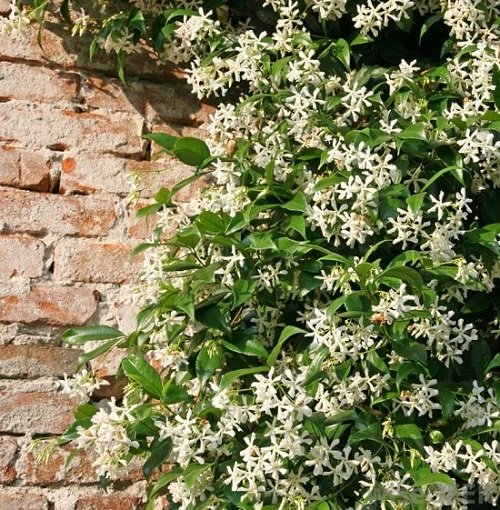
Jasminum sambac, commonly known as Arabian Jasmine, is a delightful plant adored for its sweet fragrance and stunning white petals that transform into a lovely shade of pink as they mature. Coupled with its shiny green leaves, it’s no surprise why this plant is the official flower of the Philippines. It flourishes during summer and can bloom all year round in warmer climates. There are plenty of benefits to owning a jasmine plant that you don’t want to miss out on. Additionally, Vinca is another fascinating plant you might want to consider exploring.
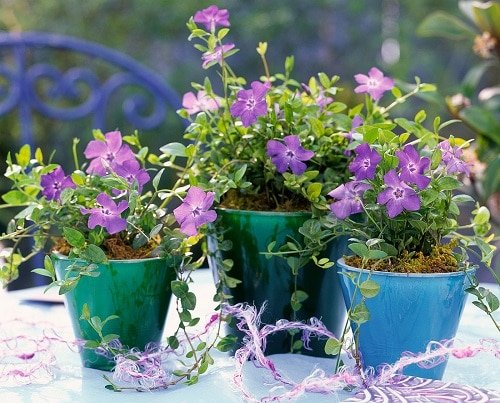
If you reside in a hot climate and have trouble keeping your plants hydrated, then the Madagascar Periwinkle or Catharanthus roseus is an ideal choice for your garden. It’s a flowering plant that grows well in USDA Zones 9-12 and doesn’t require constant watering. Apart from this, you can also look into other varieties of Vinca plants or consider Gazania as an alternative to add more options to your garden.

Rahmanflorist69 recommends Gazania rigens, commonly known as Gazanias, for those residing in USDA zones 9-11. These delightful flowers come in various vibrant shades and striking designs, making them an excellent addition to any garden. Gazanias can thrive well under full sunlight, making them a top choice for gardening enthusiasts. If you’re looking to add more color to your garden, Black-Eyed Susans are also a great option.
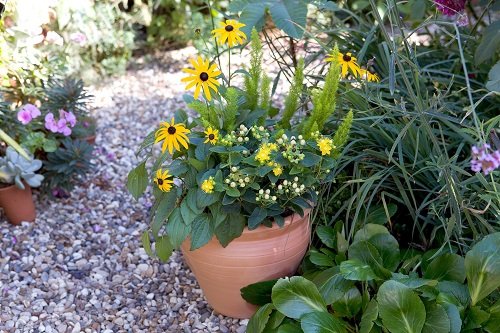
Zinnias are a favored selection among gardening aficionados because of their lively colors and eye-catching shapes. They bloom in a plethora of hues and have a noticeable central disk that resembles an eye. Furthermore, they boast strong stems that can withstand their towering height. Zinnias thrive in Growing Zones 3-7.
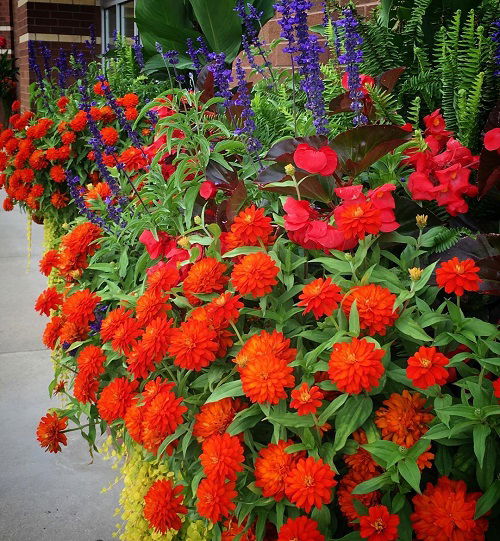
The Zinnia elegans is a beautiful flower that can thrive in different climatic regions. Its vibrant colors and sizes, ranging from small to large, make it an attractive option for gardeners. Our guide on growing Zinnias in pots is available to those interested. Furthermore, the Mexican Sunflower is another excellent choice for adding elegance to your garden.
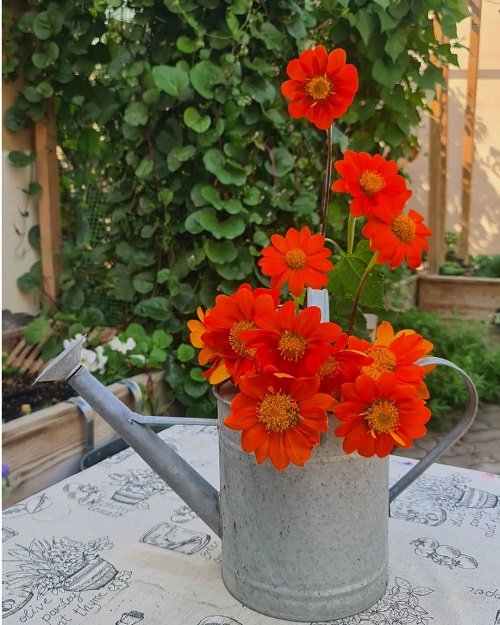
Discover the Atamy, also known as Tithonia rotundifolia, a stunning flower that thrives in USDA zones 2 to 11 and is perfect for gardens that receive plenty of sunlight. Its striking orange petals make it a standout among any garden, especially during late summer. What’s more, this flower not only adds a burst of color but also emits a distinct fragrance that appeals to butterflies and hummingbirds, making your garden even more vibrant. Why not expand your collection by adding Cosmos to your selection if you’re searching for more options?

The Cosmos bipinnatus is a stunning plant that adds a touch of elegance to any garden with its feathery foliage and beautiful shades of pink, purple, and white. It can thrive in various regions from USDA Zones 2 to 11 and is perfect for full-sun window boxes, providing a delicate and charming ambiance. Moreover, if you’re searching for another incredible flower to enhance your garden’s beauty, the Nasturtium is an excellent option.

If you want to add a distinct and vibrant touch to your garden, why not consider planting Nasturtiums (Tropaeolum majus)? These plants are great for USDA zones 8-11 and have circular leaves and eye-catching flowers shaped like trumpets. Not only do they add beauty, but they’re also safe to eat. Check out the many advantages of growing Nasturtiums in your garden today, and don’t miss out on adding Mullein to your assortment!
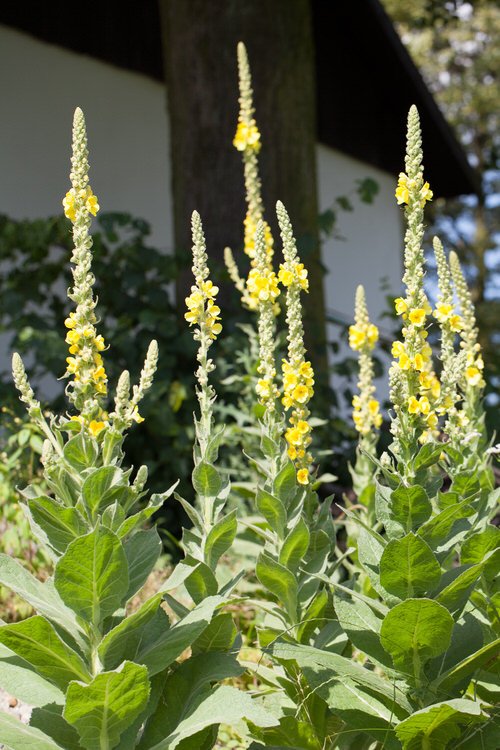
How about we have a chat about Verbascum, a plant commonly referred to as mulleins? These delightful plants thrive in USDA Zones 9-11, and they’re effortlessly identifiable by their plush and tender foliage. They also boast beautiful tall spikes with vivid yellow flowers, which are an absolute hit with bees and other pollinators. Speaking of which, our next topic is going to be Mexican Heather.
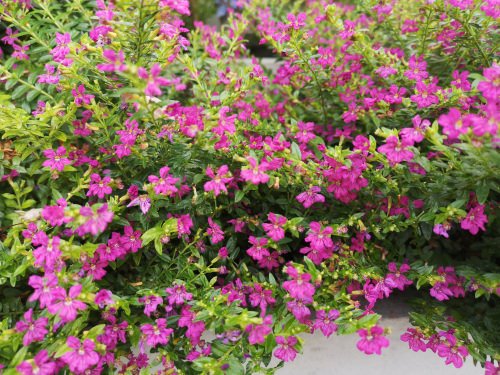
Mexican Heather, or Cuphea hyssopifolia, is a delightful plant that can bring a touch of elegance to your pots or borders with its petite purple flowers and shining foliage. This plant can flourish in the warm climates of USDA Zones 9-11, making it an excellent choice for creating a charming Mexican-inspired garden. If you’re interested in cultivating a thriving Mexican herb garden, here are some helpful tips to get you started. It’s worth noting that Snapdaon is unrelated to Mexican Heather, and the information about it isn’t very clear.
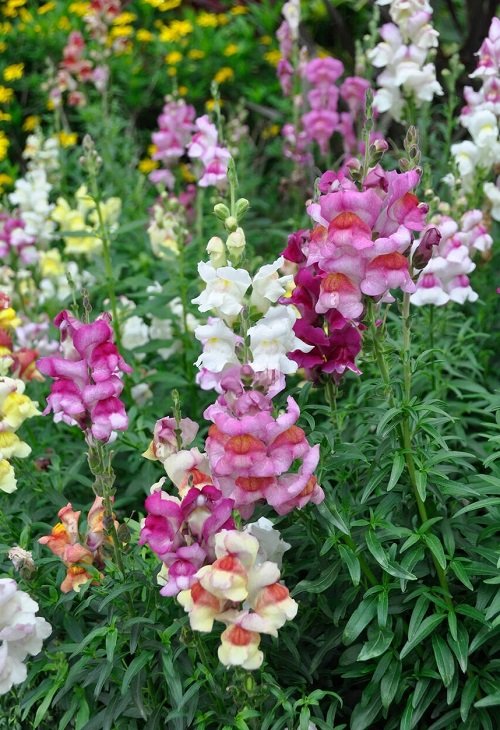
Snapdragons, scientifically named Antirrhinum majus, are stunning flowers that catch the eye. They thrive in regions encompassing USDA zones 7-10 and grow to an impressive height, making them perfect for gardens or floral arrangements. Their unique “dragon mouth” shape adds a fun element to their overall appearance. Another well-known plant is Dusty Miller.
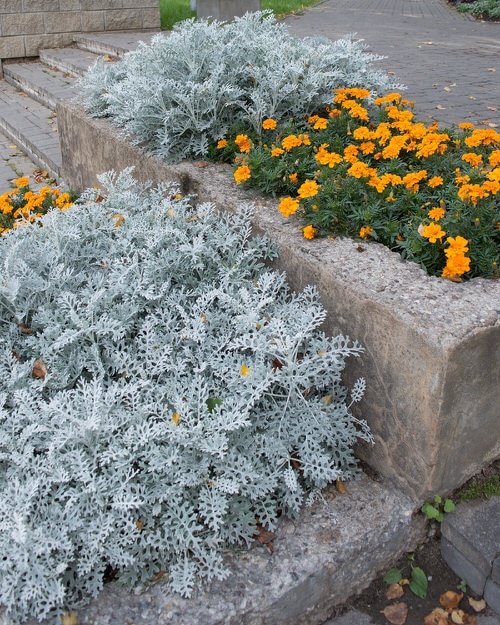
Introducing Jacobaea maritima, a one-of-a-kind selection for both borders and bouquets with its recognizable silver-gray foliage. Although it does not bloom, it can endure high temperatures of up to 100 F (38 C), making it a tough option. Take a look at some heat-loving plant combinations in containers and mull over the idea of including this robust plant in your landscape. Additionally, sneezeweed is another wonderful choice to enhance your outdoor area.

Say hello to the charming Helenium autumnale, a low-maintenance wildflower that thrives in sunny locations. Boasting daisy-like petals that come in a variety of shades, from cheerful yellow to fiery red, this perennial plant puts on a show-stopping display during the autumn season. If you’re keen on growing veggies that can handle the heat, check out our handy guide for some excellent suggestions. And if you’re curious about the Sneezeweed, don’t forget to watch our informative video to learn more!
